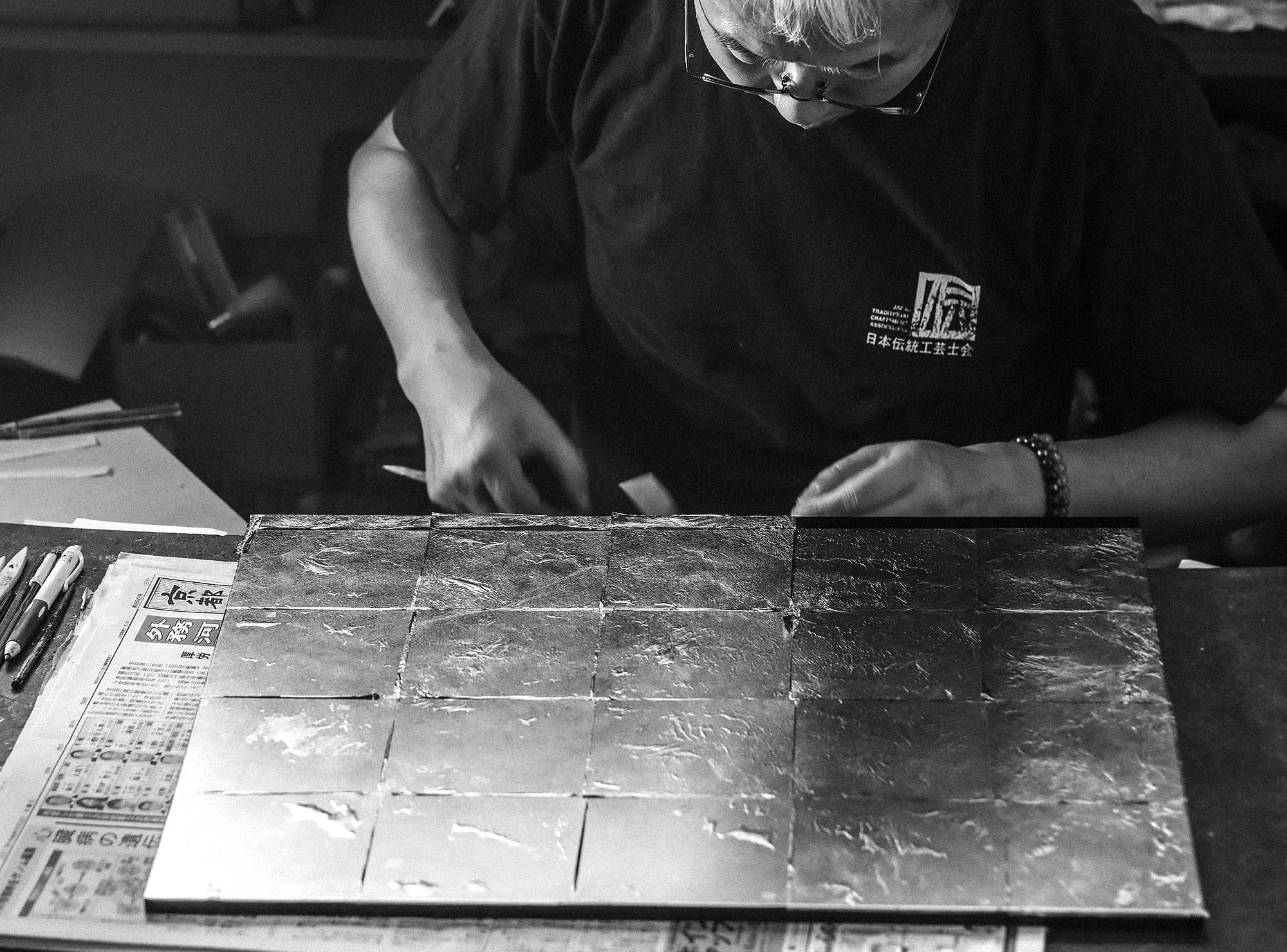The Hakuoshishi, gold leaf craftsman, places gold leaf on the surface of the urushi lacquer or metalwork. This makes the various works stand out with a glow of gold.
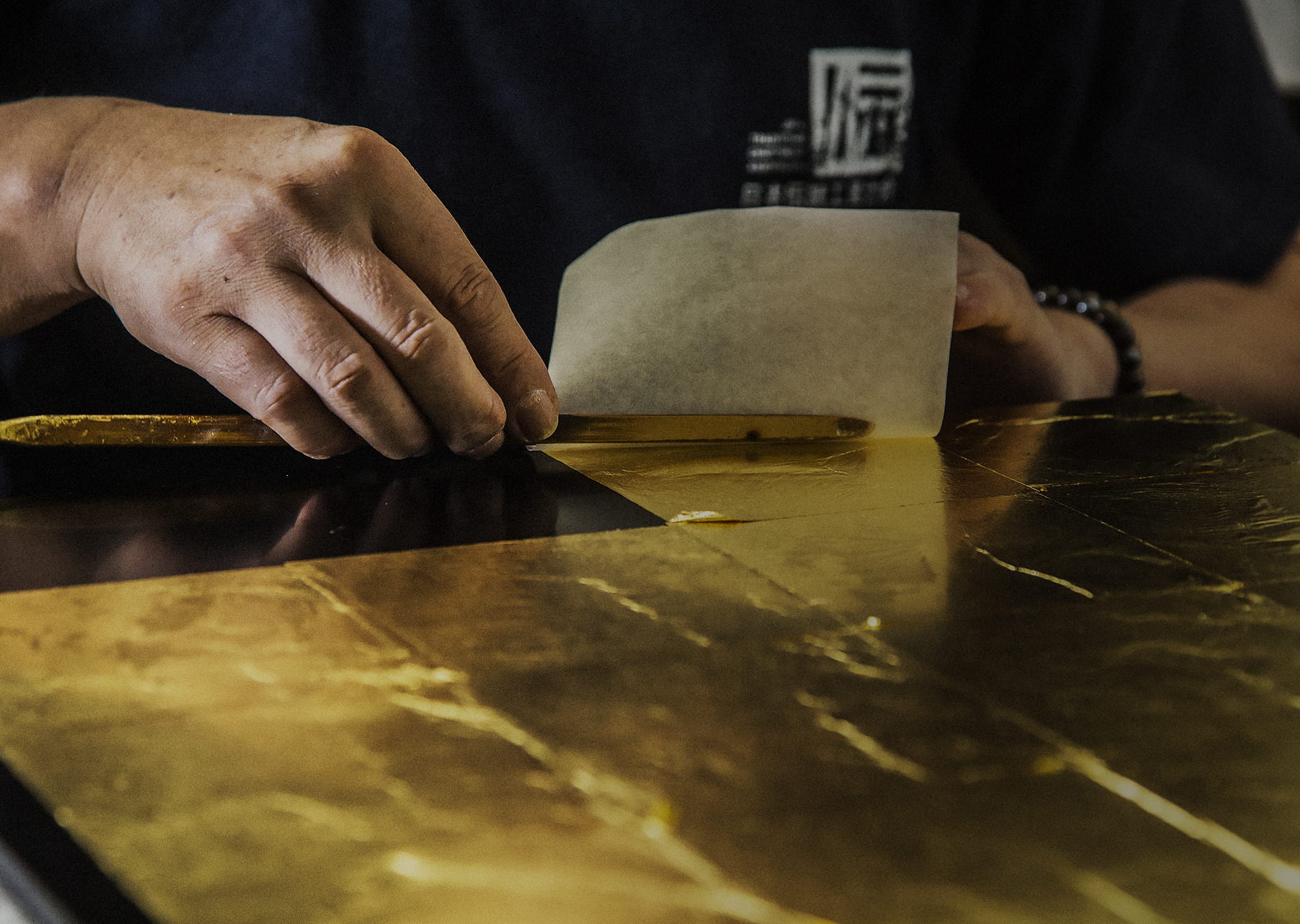
Gold Leaf Craftsmen
Hakuoshi-shi
Work of gold leaf craftsman
Foundation that creates sublimity
- Introduction
-
List of Artisans
- Altar Hall Specialist(Kuden-shi)
- Woodworking Craftsman(Kiji-shi)
- Woodcarver(Hori-shi)
- Urushi Lacquer Painter(Nu-shi)
- Roiro Finish Polisher(Roiro-shi)
- Gold Leaf Craftsmen(Hakuoshi-shi)
- Colorist(Saishiki-shi)
- Makie Master(Makie-shi)
- Buddhist Sculptor(Bus-shi)
- Kirikane Gold Cutter(Kirikane-shi)
- Decorative Metalsmith(Kazarikanagu-shi)
- Gold Engraver(Chokin-shi)
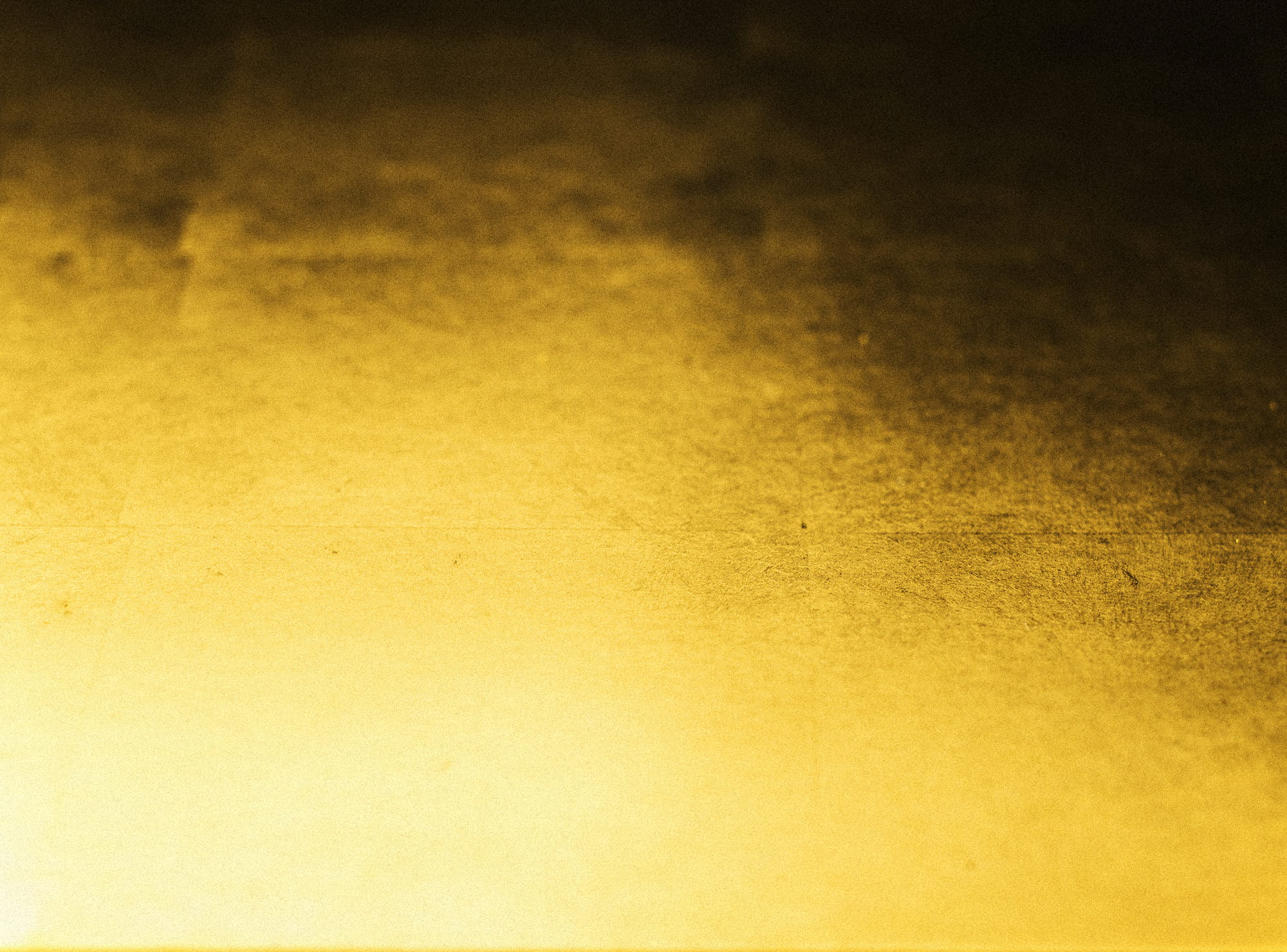
One-ten-thousandth-of-a-millimeter thin gold leaf
The hakuoshishi, gold leaf craftsman, places gold leaf on the surface of urushi lacquer or metalwork. Gold leaf is applied to the pillars, wall surface, and almost all the accessories in the sanctum of the temple. Gold leaf is used not only on the woodwork but also on metal fittings and hanging equipment.
The way in which the jet black urushi glows with gold is truly a sight to behold. Gold leaf is one ten-thousandth-of-a-millimeter thin; so thin that it would disappear if you rubbed it with the palm of your hand. A single breath could cause it to fly into the air, although it creates indescribable flamboyant brightness when placed on urushi lacquer.
With one ten-thousandth-of-a-millimeter thin leaves, not only the flat surfaces, but also the delicate expressions of the wood carvings and patterns of the fitting decorations, are finished in pure gold without losing the beauty of what lies underneath.
Gold leaf craftsmen in Kyoto use the best quality gold leaf made by hand to create various golden products such as tables, tools, accessories, and so on.
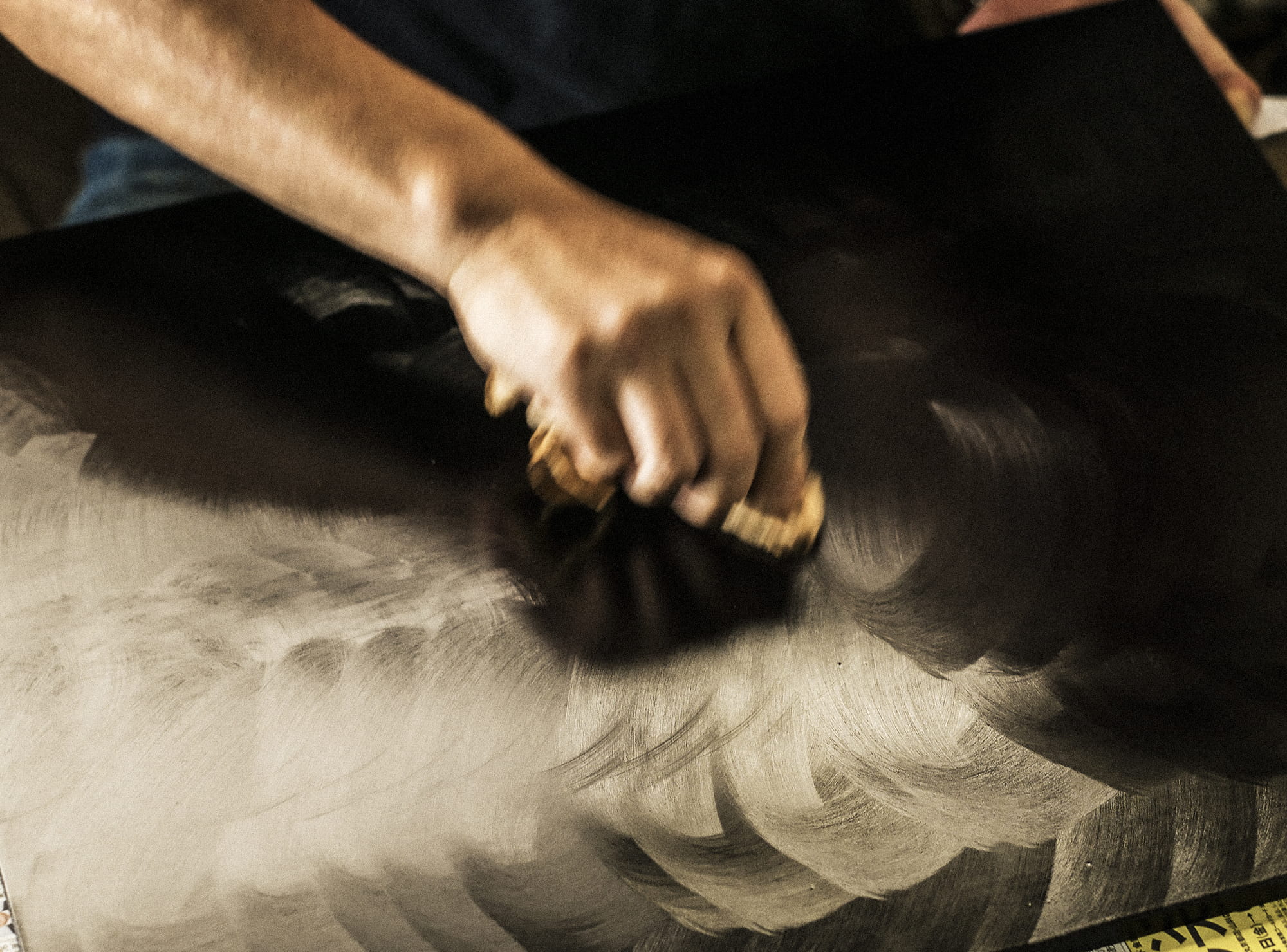
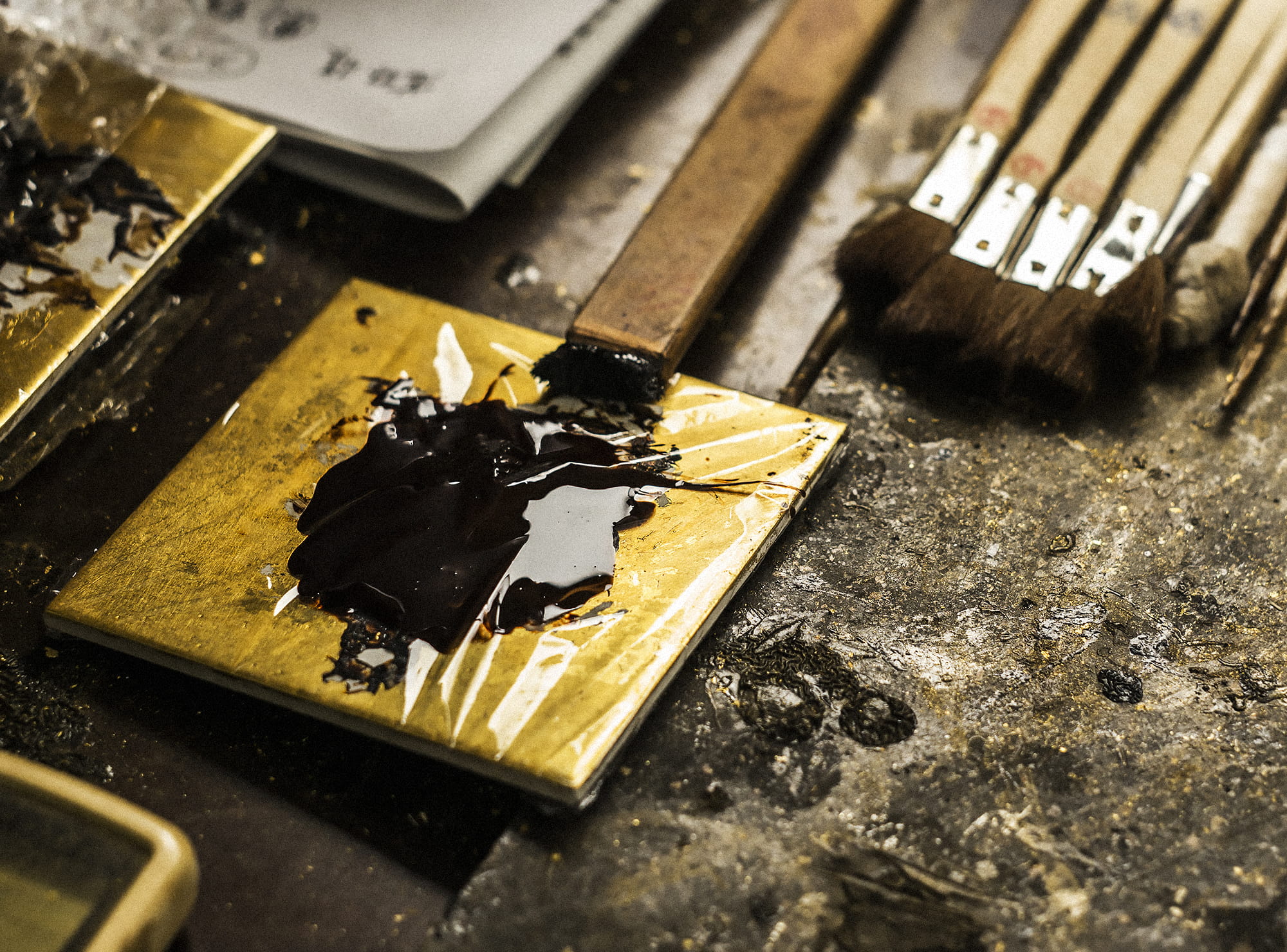
The essence is in the adhesion of urushi lacquer
Gold leaf is usually applied using urushi lacquer. The most important process of using viscous raw urushi lacquer as glue is applying it evenly to the surface. If there is any unevenness in the final application, thin gold leaf will peak out on the surface. The artisan applies the urushi lacquer just barely to the surface and delicately places gold leaves on it. The artisans say that at this stage of wiping off the lacquer, 80 percent of the process is finished. It is truly amazing that the artisan is able to line up the gold leaf pieces in a straight line, but even more important is the remaining amount of urushi lacquer.
The artisans need to figure out the right timing for the drying process of raw urushi, because regardless of the size of the surface, they paint raw lacquer all at once and place gold leaf on it until it dries.
The artisans must control the drying of the raw urushi lacquer and the timing so that they can apply and wipe raw lacquer, then apply gold leaves before the urushi lacquer dries.
For that reason, the gold leaf craftsman changes the blend of urushi lacquer each time, depending on the situation such as material, shape, temperature, humidity, and so on. In addition to handling thin gold leaf, deciding how to handle each material that will be lacquered is the most difficult process.
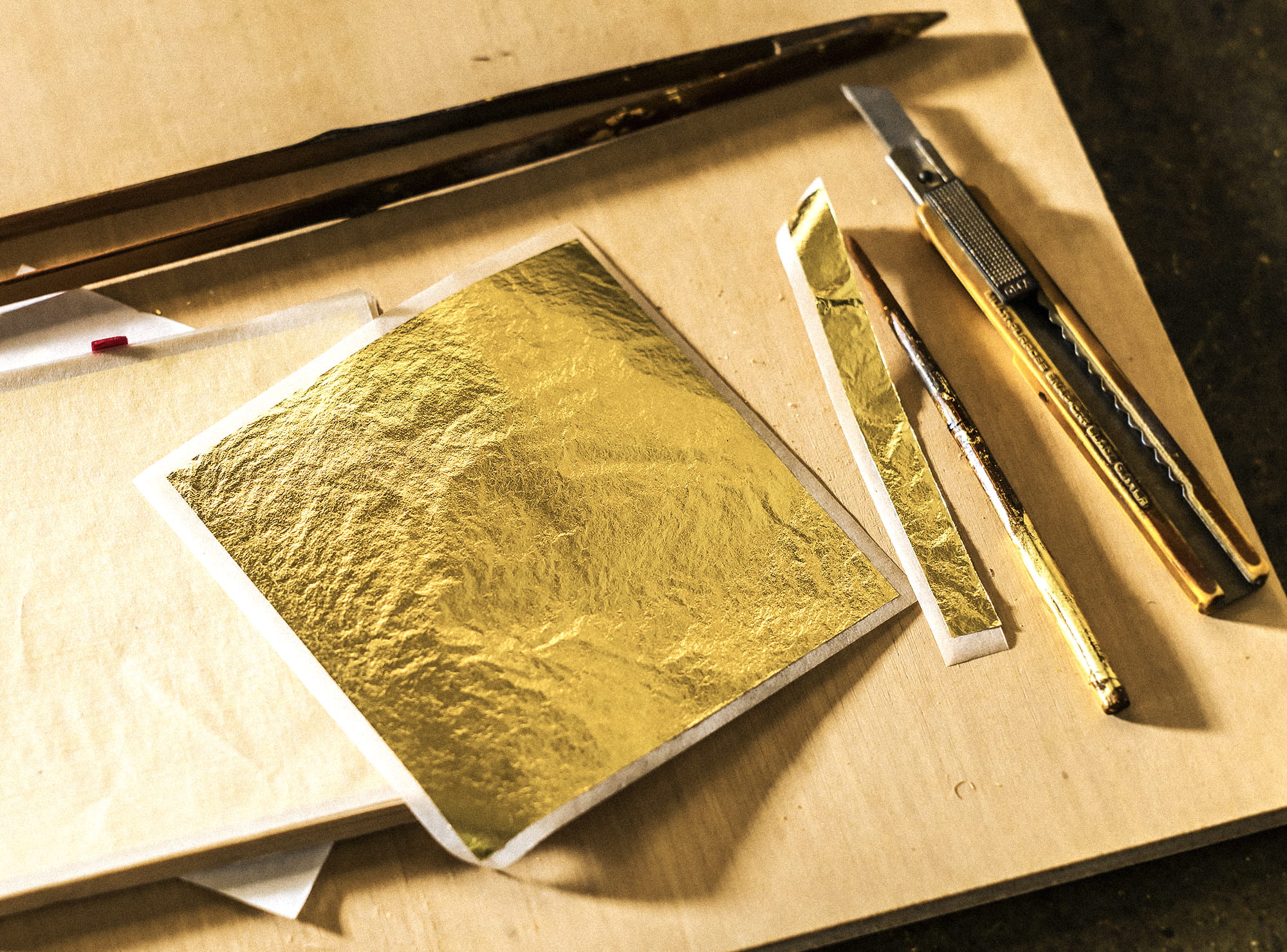
Diverse expressions and texture of materials
The color of Japanese gold leaf is slightly different from the color seen in other Asian and European countries. It is not glittery gold but rather a modest, soft gold. It is not an exaggeration to say that Japanese gold leaf is the highest quality gold leaf that can be found in the world. Its hue depends on the quality of the gold, but it is also influenced by how the urushi lacquer is applied, as well as the texture of the surface.
Due to the thinness of gold leaf, the texture of the base material comes through to the surface and expresses a subtle difference in texture, even within the same gold leaf finish. When we see gold leaves on pillars or surfaces at a main hall, we can distinguish if it's made of wood or metal. This is because the technique used in placing gold leaves brings the best out of the base materials. Using delicate materials and elaborate techniques that are anything but forceful, the gold color of Japanese craftsmanship is born.
